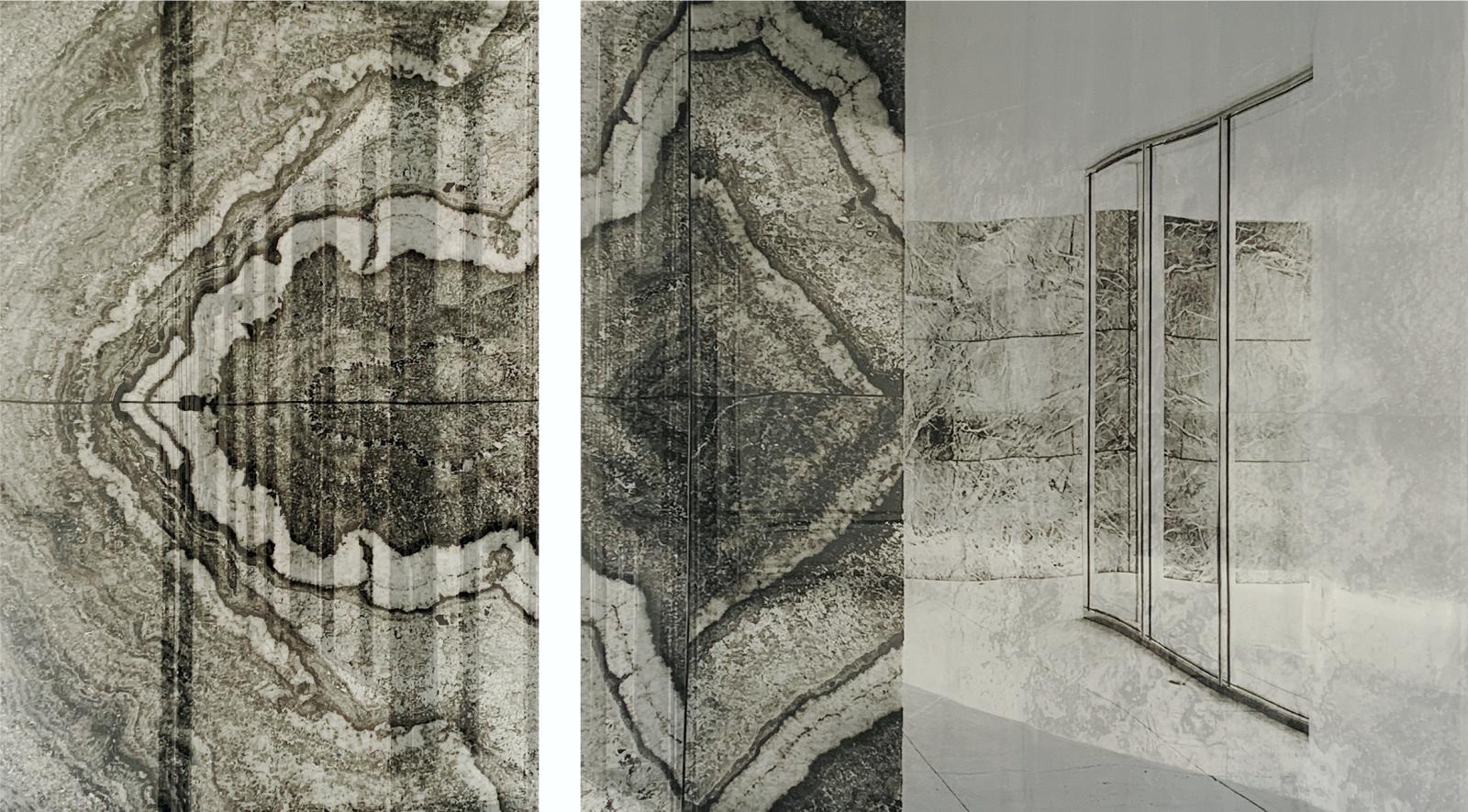In the framework of the Barcelona Gallery Weekend, Fundació Mies van der Rohe and Ana Mas Projects present an intervention by artist Laercio Redondo, which explores History and its multiple narratives. The aim is to create a dialogue with the space itself, raising questions of memory and effacements in time, especially in relation to its construction and later reconstruction.
To Redondo, architectural landmarks such as the Pavilion not only have a history but also tell a story. They are essentially narrative devices, that serve its time (and dominant ideology) by highlighting certain aspects of history while deflecting others. That is why the intervention here is subtle: it seeks to produce almost invisible disruptions in space that magnify such effacements.
“The starting point for the research that sustains my intervention in the Pavilion is the history of the construction and reconstruction of the building, and the time gaps, appearances and erasures that cross it. The proposal is to change the space of the pavilion through a concept dear to Mies van der Rohe: the dilution of the separation between painting, sculpture, design and architecture, to then activate a dialogue between the multiple narratives of the local history,” explains the artist Laercio Redondo.
The central piece consists of a set of translucid displays, made out of silk, and meticulously distributed along the glass panels. Depicting the few surviving photographs of the original building which served as models for its reconstruction, they confront the viewer with a superimposition of past and present. Offering, thus, a composite perspective on the building and the outside garden.
The artist has also created a set of prints on plywood displayed on supports that use the same kind of travertine stone as the Pavilion’s floor. Appearing at first glance as completely black monochromes, these images depend on the movement of the spectator’s body (and gaze) to reveal themselves in tenuous contrast.
A sound piece installed in the garden completes the intervention, offering a multi-layered account on the work of the architect and his collaborator Lilly Reich. Redondo’s interest for the Mies vas der Rohe Pavilion arose since architecture is a recurrent topic in his artistic production as shown in works such as The Glass House (2008), Memory from Brasilia (2012), Façade (2014) and Detour (2015) among others. Source and images Fundació Mies van der Rohe.
